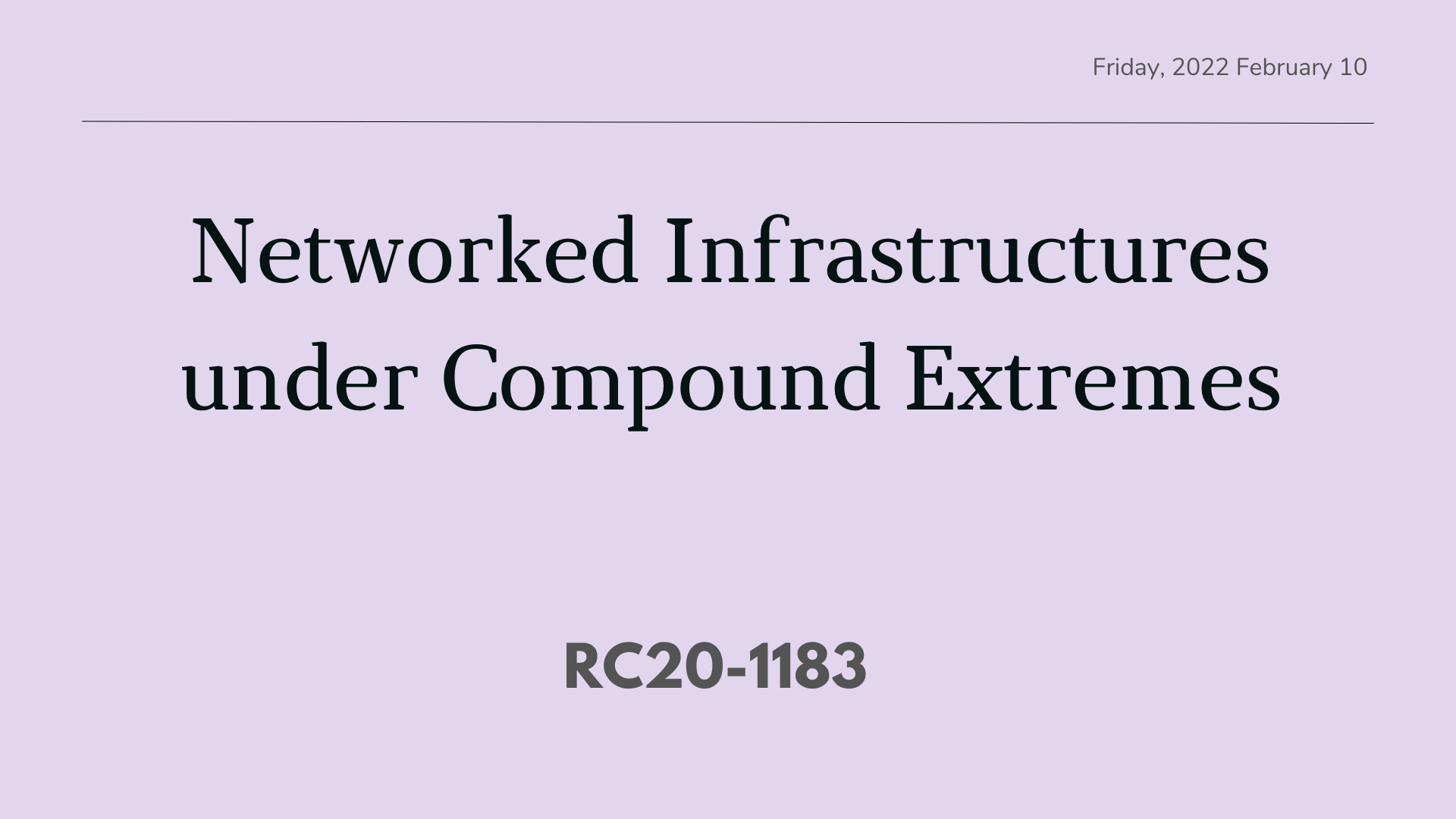Objective: US Department of Defense (DoD) installations and bases in the nation and across the globe face unprecedented external compound threats from a combination of natural hazards, terror organizations, rogue states, and even major-powers that may aspire to compete for superpower status. The growing interdependence of networked assets further lead to the possibility of cascading failures, which may in turn exacerbate internal threats caused by natural or technological failures, cyber-attacks or sabotage, as well as lack of adequate resources. The dynamic and exacerbating nature of threats, such as changing patterns of weather extremes, or evolving sophistication in dangerous malware, or even growing scarcity of resources for preparedness and maintenance, are increasing the chances of correlated extremes. Thus, climate change and infrastructural vulnerabilities are known to have increased the probability of compound weather extremes, while the possibility that nations with sophisticated cyberspace operational capabilities may choose to time the launch of a cyber-attack on the nation’s critical lifelines while the nation is facing a debilitating hurricane or riverine flood or wildfire, can no longer be ruled out (National Infrastructure Advisory Council 2018). Meanwhile, resources for preparedness and recovery have been growing scarce across civil and military installations owing to dynamic policy prescriptions and financial disincentives. The research team will develop coherent resilience theory and theoretical frameworks with computationally tractable theoretical methods for installation-level resilience, where, the specific focus will be on mapping failure and recovery pathways, adapting to changing conditions, and recovering from disruptions.
Technical Approach: The overarching hypothesis that animates this project is that resilience framing, particularly for networked infrastructures subject to compound extremes, is best conceptualized, mathematically represented, and implemented through system-level structure complemented by multiplex-network strategy. The research team’s solutions can be categorized into three parts: Mapping vulnerabilities, failure and recovery pathways - the hypothesis that resilience framing for compounding and potentially unknowable risks can be best accomplished by combining system dynamics and network science will be examined. Based on prior SERDP-funded work in the Norfolk Naval Base by members of this project’s (Army Corps) team, as well as connections through a (Naval Research Laboratory) team member, the team will map installation fragilities and interdependence, along with failure and recovery pathways. Multiplex Network Science (MNS) will capture topology and dynamics, while Multiscale System Dynamics (MSD) will generate parsimonious representations of installation ‘metabolism’. Environmental, governance, military-civil, economic, societal, informational, and infrastructural dimensions will be considered. Adapting to unknown but systematic compound threats - the hypothesis that resilience and mission assurance strategies can be developed without knowledge of the specific nature of compounding threats or risks will be examined through simulated test cases where cyber-attacks follow flood events under resource crunch. Failure and recovery pathways will be simulated via contingency-based scenario generation. Recovering from compound and/or catastrophic events - the hypothesis that recovery of mission critical system functionality can be accomplished through the combined MNS-MSD approach described above will be examined.
Benefits: This hypothesis-guided research will lead to novel frameworks and models for improving the science of resilience with an ultimate, long-term view of providing actionable insights for ensuring DoD’s readiness to unknown and possibly unknowable compounding risks.
Collaborators:
News
24. Jan 2022CEE Professor Auroop Ganguly’s spinout company risQ , a climate modeling and analytics company founded by him and his former PhD students, was acquired by Intercontinental Exchange on January, 2022.
28. May 2020CEE Professor Auroop Ganguly is the lead PI on a $3M grant for “NICE: Networked Infrastructures under Compound Extremes” from the DoD’s Strategic Environmental Research and Development Program (SERDP). The project is in collaboration with the University of California at Berkeley, US DOE’s Pacific Northwest National Lab, the US Army Corps of Engineers, and the US Naval Research Lab and will fund the research into networked infrastructures under compound extremes.






